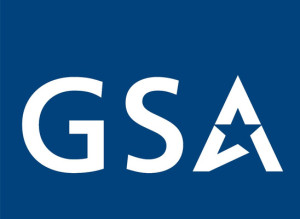
Hubbard Radio Washington DC, LLC. All rights reserved. This website is not intended for users located within the European Economic Area.
Hubbard Radio Washington DC, LLC. All rights reserved. This website is not intended for users located within the European Economic Area.
After almost nine months of no news, GSA asked vendors bidding on the Alliant 2 GWAC to guarantee their bids through Dec. 31.
I got a question a few weeks ago from a friend in industry: “What are you hearing about the Alliant 2 awards?”
The fact is I hadn’t heard anything over the last year about the status of the $65 billion multiple award IT services governmentwide acquisition contract (GWAC) since the initial protests were decided.
When I got around to checking the General Services Administration’s Interact site — which, by the way, has been an unheralded success story in the often convoluted and complicated world of industry-government communication — and low-and-behold, there was some news.
GSA has asked the bidders to extend their offers through Dec. 31.
OK, it’s not “news alert” worthy news, but still, it provides an important marker for where the GWAC stands.
The FedBizOpps notice stated, “In an abundance of caution and to protect against the Alliant 2 (and the Alliant 2 Small Business) acceptance period closing prior to making award.”
John Cavadias, the GSA GWAC contracting officer, said in an email to Federal News Radio Alliant 2 remains on schedule for award prior to winter 2017.
“GSA still intends to make awards based on initial proposals without discussions, it is appropriate to take this precautionary measure should unforeseen delays arise as we enter the new fiscal year,” he said.
Lisa Pafe, vice president of Lohfeld Consulting Group, follows Alliant 2 closely. She said GSA has reached out to some contractors, asking for more documents or clarification on their bids.
“What that means is hard to say for sure. Does it mean these vendors passed the first test and GSA is now asking for additional documents?” Pafe said in an interview with Federal News Radio. “Other than that, everyone is just waiting for the awards. Since GSA is going to rank offers based on self-scoring, I think it’s taking a little longer for them to do the verifications.”
Pafe said she consulted with several contractors on their bids so she knows just how long it takes to review and finalize the self-scoring and bid documents.
Aliya Moyers, a research analyst on the civilian team for Deltek, also is following the Alliant 2 GWAC closely. She said vendors initially expected awards this summer, but a GSA blog earlier this summer confirmed the timeline has been pushed a little to the right.
“With the Alliant vehicle still active and set to expire February 2019, there will be an overlap of the two contracts. This may be the first time two active contracts are open at the same time,” Moyers said in an interview. “One of the main reasons for GSA awarding Alliant 2 earlier is a lot of clients have task orders with a period of performance for 10 years. Right now under Alliant, GSA is not able to help those clients because the latest any contract could run would be 2024 — five years after expiration of Alliant.”
Alliant has been a popular contract for GSA’s agency customers and vendors alike.
GSA’s GWAC Dashboard says agencies have spent $3.2 billion through Alliant and Alliant small business so far in fiscal 2017. Alliant has seen significant growth over the last three years. In 2014, agencies spent about $3.8 billion. A year later, that grew to $4.1 billion, and two years later, Alliant received almost $4.7 billion in sales.
The Defense Department remains the biggest customer, obligating $3.8 billion since 2009 with the Homeland Security Department being the largest civilian user with $1.99 billion and the State Department spending $1.9 billion.
Additionally, GSA and the Homeland Security Department decided to use Alliant and Alliant 2 for all future task orders under the Continuous Diagnostics and Mitigation (CDM) cyber program.
GSA and DHS expect to add another $2.75 billon-to-$3.4 billion through the new CDM task orders called “DEFEND.” Sources tell Federal News Radio GSA and DHS will release the first task orders under DEFEND as soon as this week.
“Alliant is a well-liked contract, and many companies have been able to grow their businesses by winning major task orders,” Pafe said. “I think the biggest concerns with Alliant 2 will be for the mid-tier vendors, who were successful on Alliant small business so they couldn’t bid on Alliant 2 small business. They are the ones that are most anxiously waiting to hear about awards. I saw companies submitting bids that seemed to have no chance, but if GSA eliminates a number of bidders because of minor compliance issues, like they did with the Human Capital and Training Solutions (HCaTS) awards, then maybe those firms will make it to a spot where GSA has to review their bids.”
While a lot of the federal technology community is watching and waiting for Alliant 2 awards, there are several other large-dollar and high-profile contracts that are on many vendors’ radar.
Based on interviews with Deltek and Lohfeld experts, here are a sampling of those big deals that are expected this fall and winter:
Copyright © 2024 Federal News Network. All rights reserved. This website is not intended for users located within the European Economic Area.
Jason Miller is executive editor of Federal News Network and directs news coverage on the people, policy and programs of the federal government.
Follow @jmillerWFED

